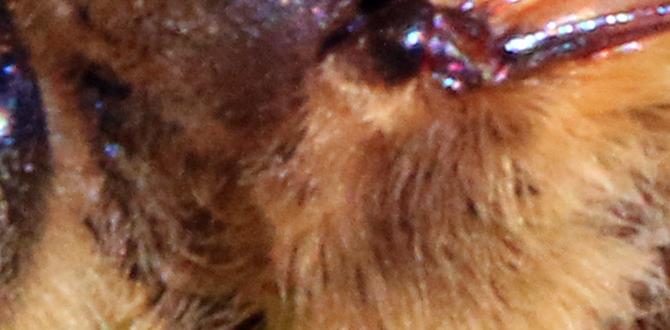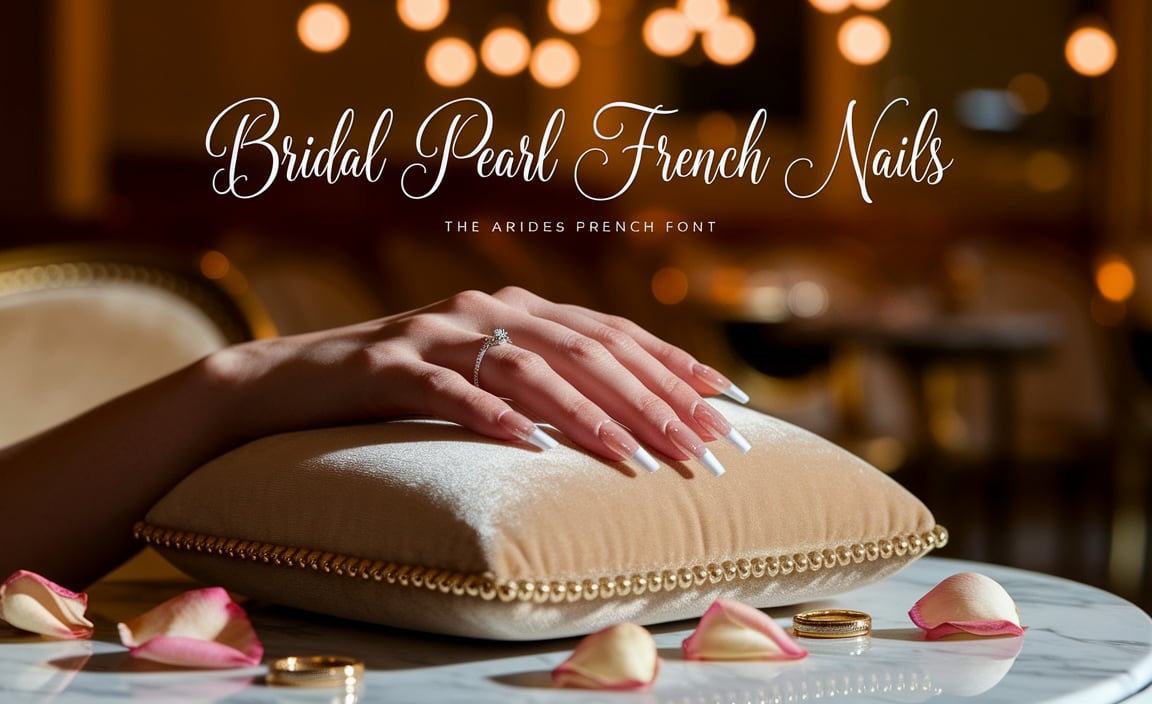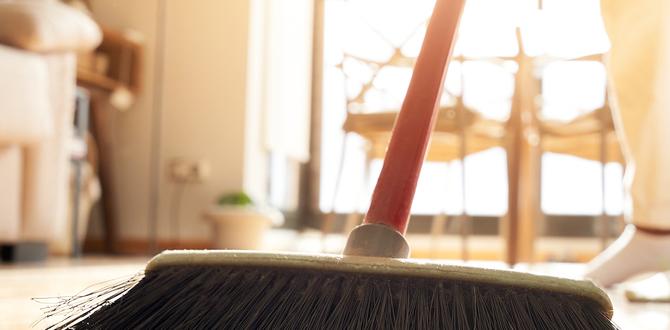Nude abstract stroke nails are a chic and minimalist way to add an artistic touch to your manicure. This guide breaks down how to achieve this elegant look with simple steps, essential tools, and beginner-friendly tips, making sophisticated nail art accessible for everyone.
Looking for a nail design that’s both sophisticated and effortlessly chic? Nude abstract stroke nails are your answer! They’re perfect for any occasion, adding a touch of modern art to your fingertips without being over the top. If you’ve ever admired those subtly artistic nails and thought, “I could never do that!”—think again! This guide is here to show you just how easy it is to create stunning nude abstract stroke nails right at home. We’ll walk you through everything, from choosing the right shades to mastering those beautiful, free-flowing strokes. Get ready to elevate your at-home manicures!
—
Achieving Nude Abstract Stroke Nails: Your Ultimate Beginner’s Guide
Nude abstract stroke nails have taken the beauty world by storm, and for good reason! They offer a versatile and stylish way to express your personality through your manicure. Whether you’re heading to the office, a casual brunch, or a special event, this nail art trend fits right in. It’s the perfect blend of minimalism and artistry, proving that you don’t need loud colors or complex designs to make a statement. Keep reading, and I’ll guide you every step of the way to achieving this gorgeous look yourself!
—
Why Nude Abstract Strokes? Perfecting the Minimalist Artistry
Nude abstract strokes are incredibly popular because they embody a sophisticated, understated elegance. They’re a fantastic way to dip your toes into the world of nail art. The neutral base of nude polishes is universally flattering, and the abstract strokes offer a creative outlet that’s forgiving for beginners. Unlike intricate patterns, abstract strokes are all about embracing imperfection and fluid lines. This trend allows for endless personalization, making your nails truly unique.
—
Essential Tools for Your Nude Abstract Stroke Mani
Before we dive into the fun part, let’s gather our supplies. Having the right tools makes all the difference in achieving a professional-looking finish. Don’t worry; you likely have most of these already, or they’re easy to find!
Here’s what you’ll need:
- Base Coat: To protect your natural nails and help polish adhere better.
- Nude Nail Polish(es): Choose one or a few shades of nude that complement your skin tone. Think beige, soft pink, creamy tan, or light taupe.
- Accent Color Polish (Optional): A darker nude, white, black, or a subtle metallic can add contrast.
- Detail Brushes or Dotting Tools: These are key for creating the strokes. A thin striping brush or a toothpick can work in a pinch!
- Top Coat: To seal in your design and add shine.
- Nail Polish Remover: For any little oopsies.
- Cotton Swabs or Pad: For precise cleanup.
- Paper Towel or Palette: To wipe excess polish off your brush.
Choosing the right nude is super important! Consider your skin tone. For fairer skin, try pink-toned nudes. For medium skin, beige or tan shades work beautifully. Deeper skin tones can rock rich caramels and warm browns. If you’re unsure, a classic creamy beige is a safe and stylish bet for everyone.
—
Step-by-Step: Creating Your Nude Abstract Stroke Nails
Ready to get creative? Follow these simple steps to achieve your stunning nude abstract stroke manicure:
- Prep Your Nails: Start with clean, dry nails. Push back your cuticles gently using an orange stick or cuticle pusher. If needed, lightly buff the surface of your nails to remove any shine and ensure good polish adhesion. Always wash your hands thoroughly afterward to remove any dust.
- Apply Base Coat: This is crucial for nail health and polish longevity. Apply one thin layer of your favorite base coat. Allow it to dry completely, which usually takes about 30-60 seconds.
- Apply Nude Polish: Apply your chosen nude polish. Most polishes require two thin coats for full opacity. Let each coat dry for at least a minute or two before applying the next. Patience here prevents dreaded smudges!
- Gather Your Stroke Tools: Now for the fun part! Dip your detail brush or toothpick into your accent color polish (or a darker nude, white, or black if you’re using a lighter nude base). Wipe off any excess polish on a paper towel or palette. This is key to control! You want just enough polish to create a clean line.
- Create Your Strokes: Gently touch the brush to your nail and drag it to create a stroke. Think fluid, organic lines. You can make them thick or thin, curved or straight. Don’t aim for perfection; abstract art is about freedom! Try different placements: a single sweeping line, a few scattered dashes, or a small cluster of delicate strokes.
- Add Detail (Optional): If you want more dimension, you can use a different shade of nude or a contrasting color to add smaller, finer strokes over or around your first ones. Again, keep it minimal and artistic.
- Clean Up: Use a small brush dipped in nail polish remover to carefully clean up any polish that got onto your skin or cuticles. A cotton swab works well for larger areas.
- Apply Top Coat: Once your design is completely dry (give it at least 5 minutes to prevent dragging the strokes!), apply a generous layer of your favorite shiny top coat. This seals everything in, prevents chipping, and gives your nails that beautiful glossy finish.
- Final Dry Time: Let your nails dry thoroughly. This can take 10-15 minutes for the top coat to fully harden. Avoid touching anything with your nails during this time!
Remember, practice makes perfect with nail art. Don’t be discouraged if your first attempt isn’t exactly what you pictured. Each stroke is a learning opportunity, and the beauty of abstract art is its forgiving nature. Embrace the process and enjoy creating something uniquely yours!
—
Nude Abstract Stroke Nail Variations to Inspire You
The beauty of nude abstract strokes lies in their versatility. You can play with different colors, textures, and stroke styles to create a look that’s perfectly you.
Monochromatic Magic
Stick to different shades of nude for a truly subtle and sophisticated look. Use a creamy beige as your base and draw fine lines in a slightly darker or lighter nude. It’s chic, understated, and perfect for any professional setting.
Contrast & Pop
Pair a classic nude base with black, white, or a metallic gold or silver. A single, bold black stroke on a nude nail creates a dramatic yet minimalist effect. White strokes offer a softer, modern contrast.
Subtle Sheen
Try using a nude polish with a subtle shimmer or a metallic nude for your base. Then, add simple abstract strokes in a matte finish from a contrasting color. This play on textures adds an unexpected dimension.
Textural Play
Experiment with different brush types or even a fine-tipped pen for nail art. A dotting tool can create small dots that can be connected, or a fan brush can give a feathered effect. For a touch of luxury, consider adding a tiny bit of foil flake within a stroke.
Minimalist Accents
Don’t feel the need to cover your entire nail. A single, delicate stroke near the cuticle or along the free edge can be just as impactful. This is a great way to start if you’re new to nail art.
—
Choosing the Right Nude Shade for Your Skin Tone
Selecting the perfect nude polish is like finding the right foundation for your skin – it makes a world of difference! Nude shades can range from pale pinks and creamy beiges to warm caramels and deep chocolates. Here’s a quick guide to help you find your best match:
| Skin Tone | Recommended Nude Shades | Why They Work |
|---|---|---|
| Very Fair to Fair: Pinkish undertones, may burn easily. | Pale pinks, soft peachy nudes, milky beige. | These shades complement the natural cool tones in fair skin without looking washed out. |
| Light to Medium: Can tan easily, golden or olive undertones. | Creamy beige, soft taupe, light caramel, peachy nude. | These mid-tone shades provide a beautiful balance, avoiding extremes of too light or too dark. |
| Tan to Olive: Naturally warm undertones, tans well. | Warm beige, honey tones, light to medium browns, peachy caramel. | Rich, warm nudes enhance olive undertones and create a sunkissed look. |
| Deep to Dark: Rich, warm, or cool undertones, rarely burn. | Deep caramels, chocolate browns, rich espresso, deep latte shades. | These deeper shades stand out beautifully and offer a sophisticated contrast. |
Don’t be afraid to experiment! What looks good on one person might surprise you on another. Sometimes a shade that seems too light or too dark at first glance can be the perfect subtle enhancement when applied. For a quick overview on skin undertones, the Healthline guide to finding skin undertones can be very helpful.
—
Tips for Flawless Abstract Stroke Application
Even with the simplest designs, a few pro tips can elevate your at-home manicure from good to gorgeous!
- Less is More with Polish: When loading your brush for strokes, always wipe off the excess. Too much polish will create blobs and make cleanup harder.
- Steady Your Hand: Rest your pinky finger on a flat surface or even on your other hand to create a stable base for drawing.
- Work in Thin Layers: Whether it’s the base nude color or the strokes, thin layers dry faster and look smoother.
- Clean as You Go: Have your nail polish remover and cleanup brush ready. Smudges are much easier to fix immediately than after they’ve dried.
- Brush Control is Key: For fine lines, use the very tip of a thin brush. For broader strokes, use more of the brush’s side.
- Embrace Imperfection: Remember, it’s abstract art! Wobbly lines and slightly uneven strokes are part of the charm. Don’t strive for machine-like precision.
- Don’t Forget the Sealing: A good top coat is your best friend. It protects the design and adds that salon-quality shine. Consider a quick-dry top coat if you’re short on time, but make sure your polish is sufficiently dry first to avoid dragging.
—
Understanding Nail Polish Formulas for Best Results
The type of nail polish you use can impact how easily you can create abstract strokes. Here’s a quick look at common formulas and how they might work for this design:
| Polish Type | Pros for Abstract Strokes | Cons for Abstract Strokes | Best For |
|---|---|---|---|
| Standard Lacquer | Widely available, huge color selection, easy to find in nude shades. | Can be prone to chipping, requires longer drying time between coats. | Beginners learning the basics, everyday wear. |
| Gel Polish | Incredibly durable, high-gloss finish, long-lasting. Provides a smooth surface. | Requires a UV/LED lamp for curing, can be trickier to remove, more expensive initial setup. | Those seeking maximum longevity and a super-shiny finish. Strokes can be done with gel art pens or regular polish over a cured gel base. |
| Quick-Dry Polish | Dries very rapidly, reducing smudging risk. | Can sometimes be thicker or streaky, may not have as many nude shade options. | Busy individuals who need manicures to dry fast. |
| Dipping Powder (SNS) | Offers extreme durability and a smooth finish. The powder itself can be buffed to a shine. | Application is a multi-step process (dipping, activating), not ideal for freehand strokes directly on the nail layers without prior art training. Best to do strokes with regular polish over a completed dip manicure. | Maximum durability and natural-looking strength. |
For most beginners aiming for a simple nude abstract stroke nail, standard lacquer is perfectly fine. If you’re a seasoned DIY-er who loves longevity, gel polish offers a fantastic, durable canvas. Always refer to the manufacturer’s instructions for specific application and curing times, especially with gel or dip systems. For more in-depth nail product information, the FDA’s overview of nail care products provides important regulatory context regarding cosmetic ingredients.
—
Troubleshooting Common Nude Abstract Stroke Nail Issues
Even the best of us run into a few hiccups now and then! Here are some common problems and how to fix them:
- Problem: Polish is streaky and uneven.
Solution: Ensure you’re applying thin coats. Let each coat dry completely before the next. If your nude polish is naturally streaky, try one more thin coat, or consider a different formula. Sometimes a strategically placed abstract stroke can distract from minor streaks!
- Problem: Strokes are too thick or gloppy.
Solution: You’re using too much polish on your brush. Wipe off the excess on your paper towel or palette until you have just a thin layer of polish on the tip.
- Problem: Smudged design before it’s dry.
Solution: Patience is key! Ensure you allow adequate drying time between the nude base coats and before applying the top coat. If a smudge happens, gently try to smooth it with a cleanup brush dipped in remover, or strategically add another stroke to cover it.
- Problem: Strokes spreading or bleeding into the nude base.
Solution: This usually happens when the base coat isn’t fully dry. Make sure your nude polish is bone dry before adding your strokes. Also, ensure your accent polish isn’t too thin or watery.
- Problem: Difficulty controlling the brush for fine lines.
Solution: Try using a much finer striping brush, or even a straightened paperclip or toothpick for very delicate lines. Practice on a piece of paper first to get a feel for the control needed.
Remember, nail art is a creative journey. The goal is to have fun and express yourself! Minor imperfections often add to the unique charm of abstract designs.
—
Frequently Asked Questions (FAQ) About Nude Abstract Stroke Nails
Got more questions? Lisa Drew from Nailerguy is here to help!
Q1: How long do nude abstract stroke nails typically last?
A: With proper application and a good top coat, a standard nude abstract stroke manicure can last anywhere from 5 to 10 days, depending on your daily activities. Gel polish versions can last 2-3 weeks.
Q2: Can I do abstract strokes with nail stamping?
A: Yes! You can use abstract pattern stamping plates with nude polishes for a different kind of abstract look. For the stroke style you see here, freehand application with a brush or tool is usually best.
Q3: What if I’m really bad at freehand art?
A: No worries! Try using thin nail art stickers that mimic strokes, or use a dotting tool to create dots that you can then connect into lines. Even slightly imperfect lines add to the artistic charm!
Q4: Do I need special brushes?
A: Not necessarily to start! A fine-tipped detail brush is ideal, but a clean toothpick, a fine-tipped regular paintbrush (that you dedicate only to nail art), or even a straightened paperclip can work for creating strokes.
Q5: Can I use nail polish pens for this look?
A: Absolutely! Nail polish pens designed for detail work are fantastic for creating clean, controlled strokes. They offer great precision, especially for beginners.
Q6: How do I keep my nude polish from looking dull?
A: A high-quality, glossy top coat is essential! Reapply your top coat every 2-3 days to refresh the shine and protect your manicure. Make sure your polish is completely dry before applying top coat.
Q7: Can I combine nude abstract strokes with other nail art elements



